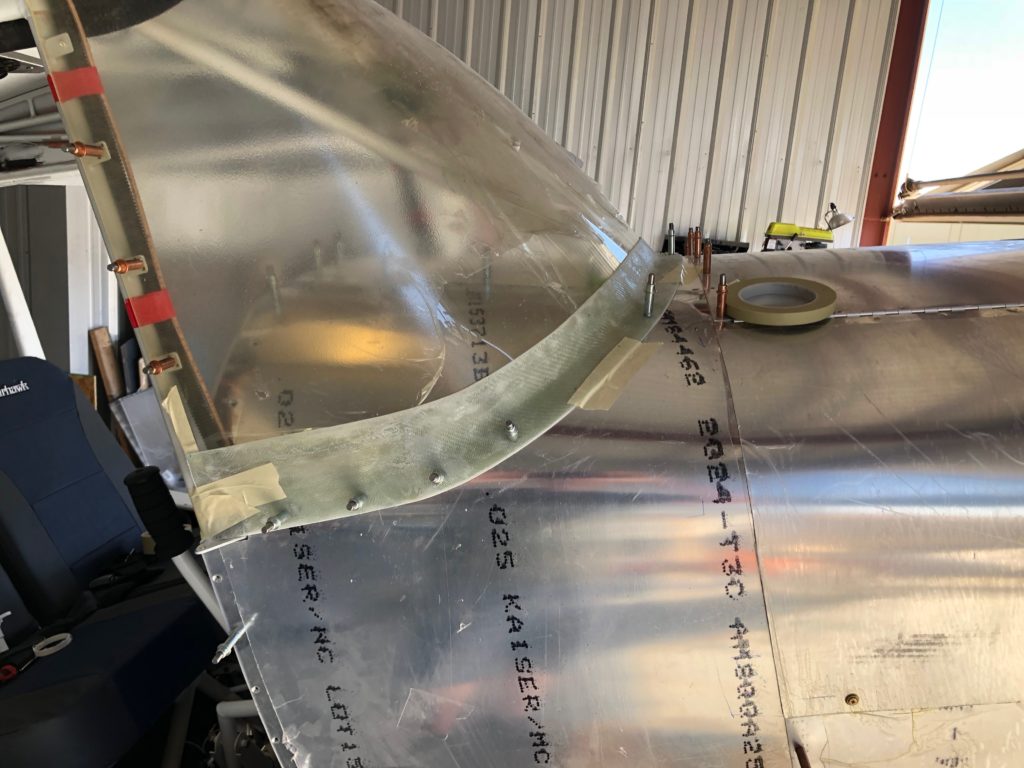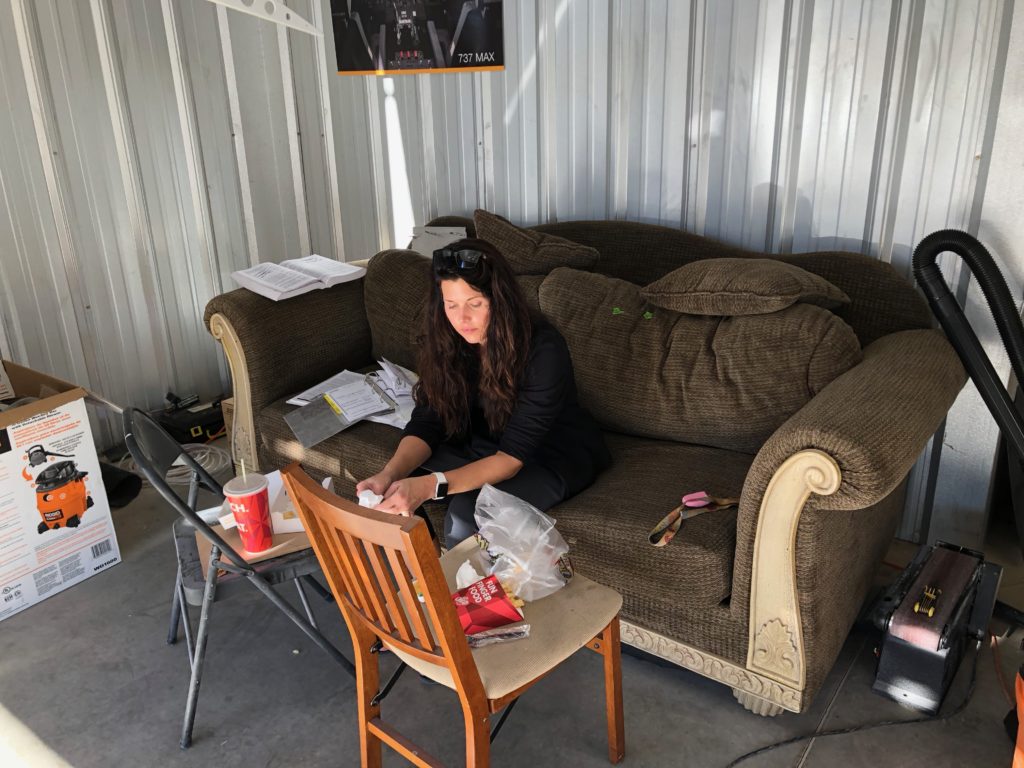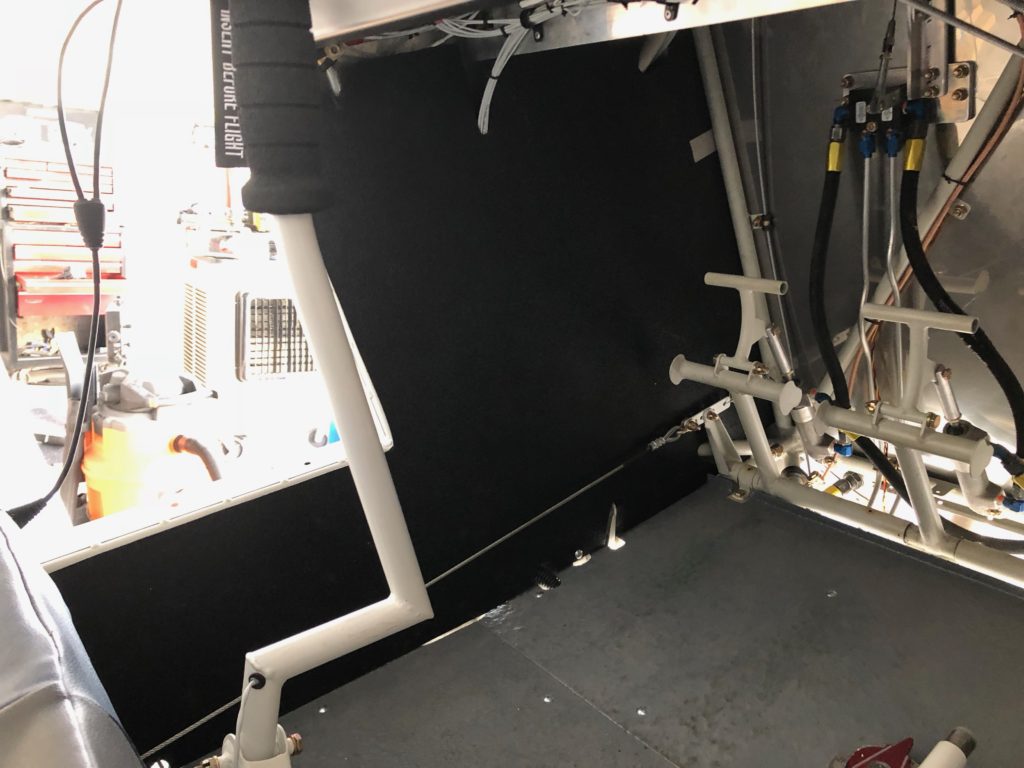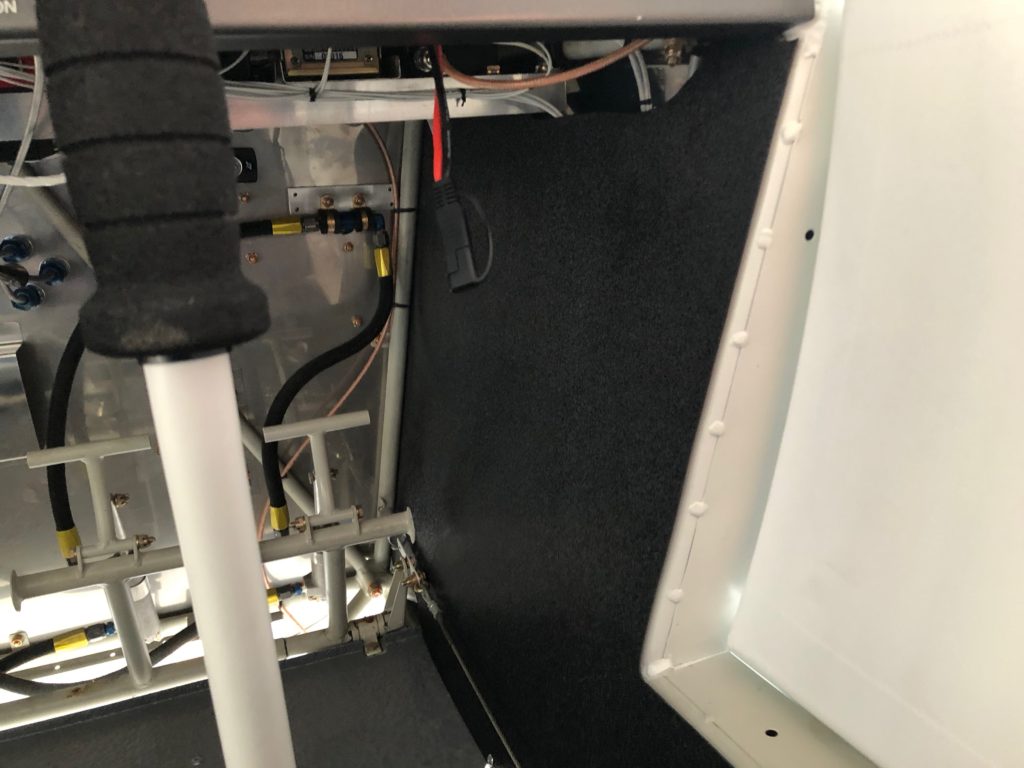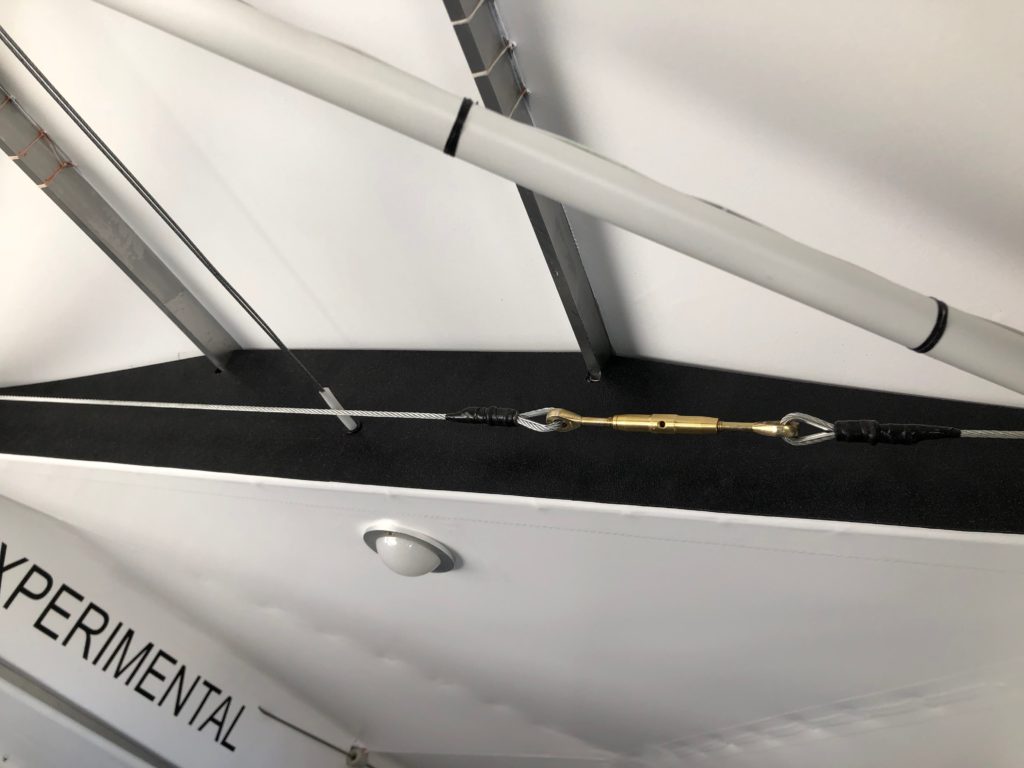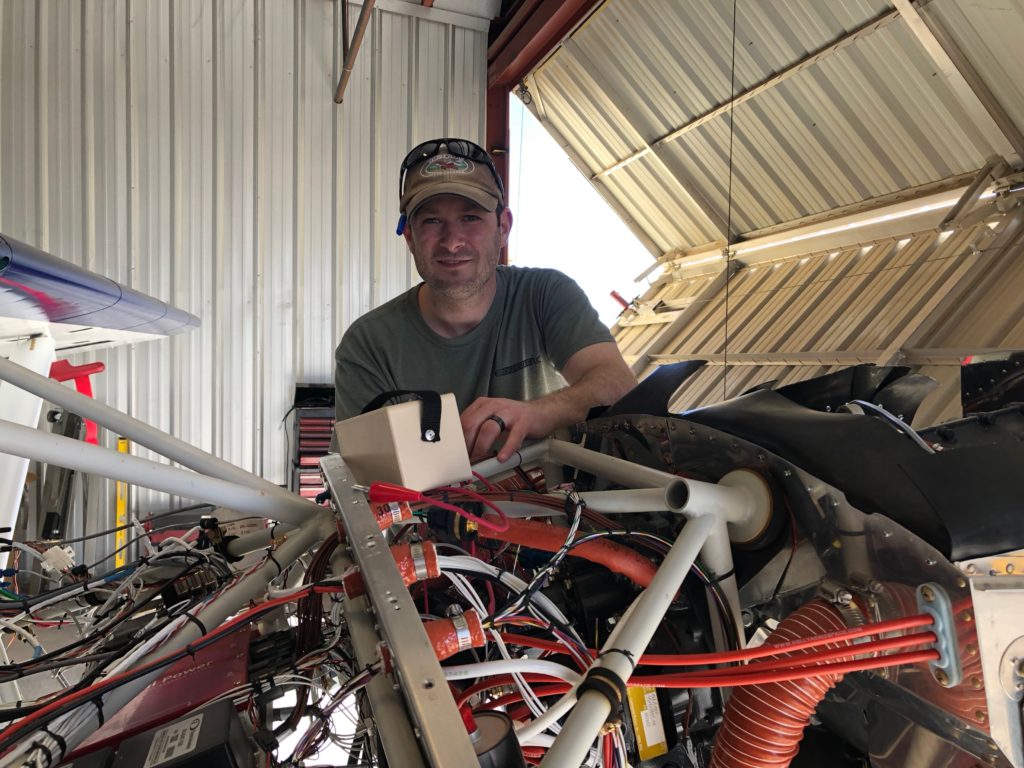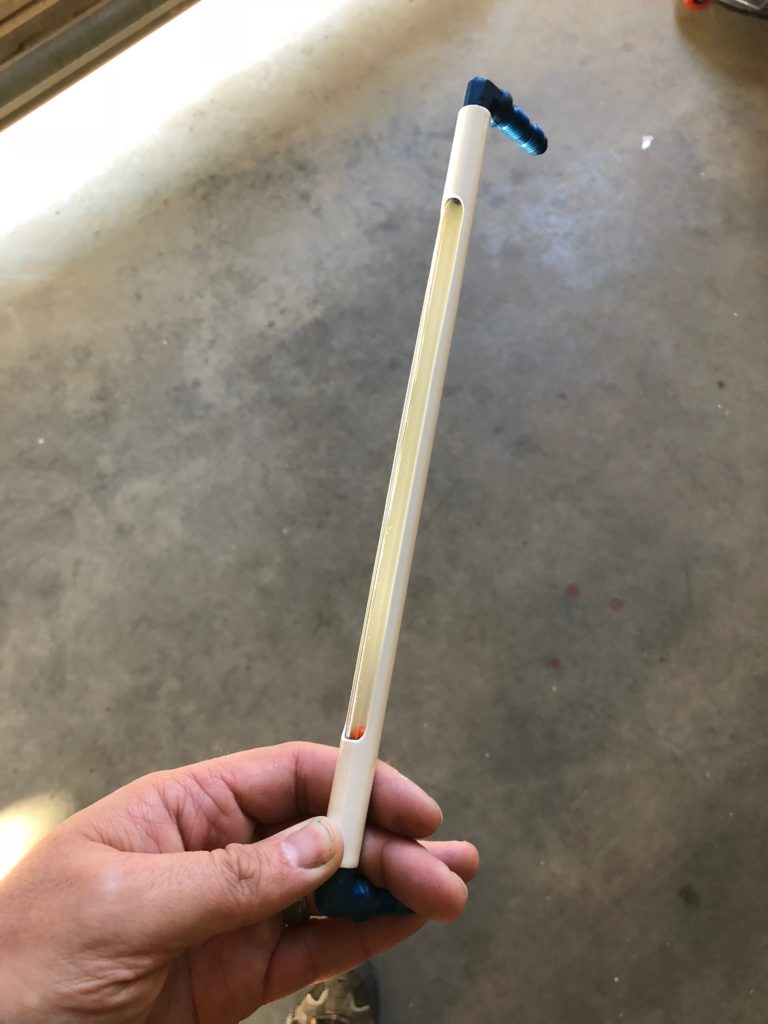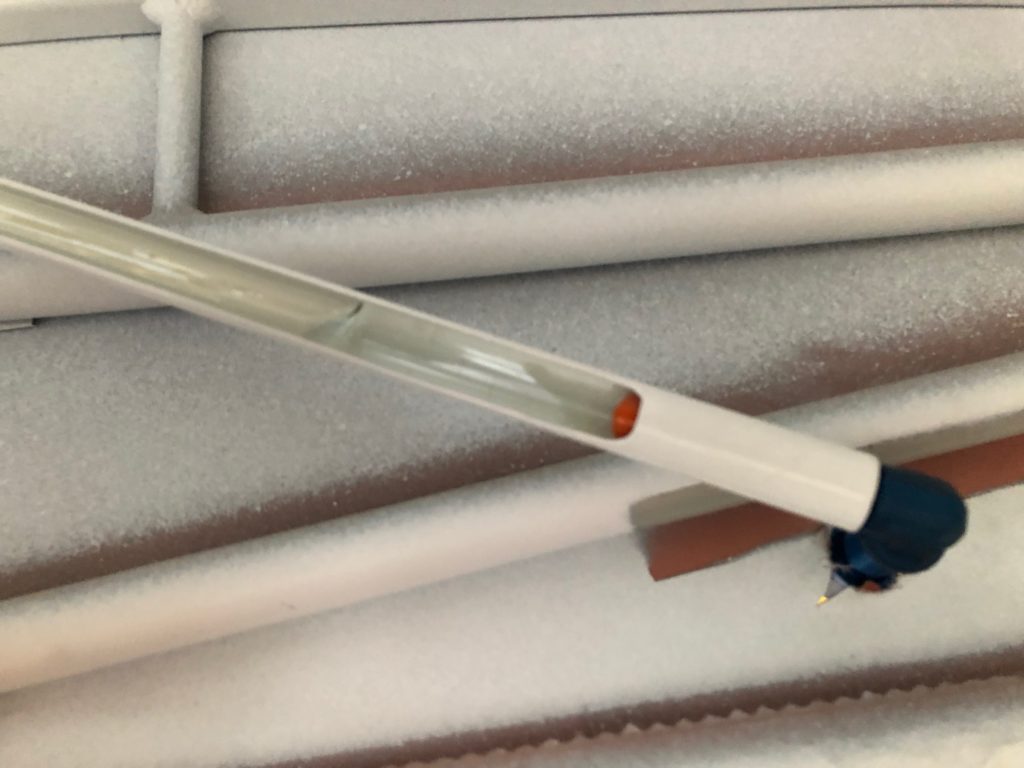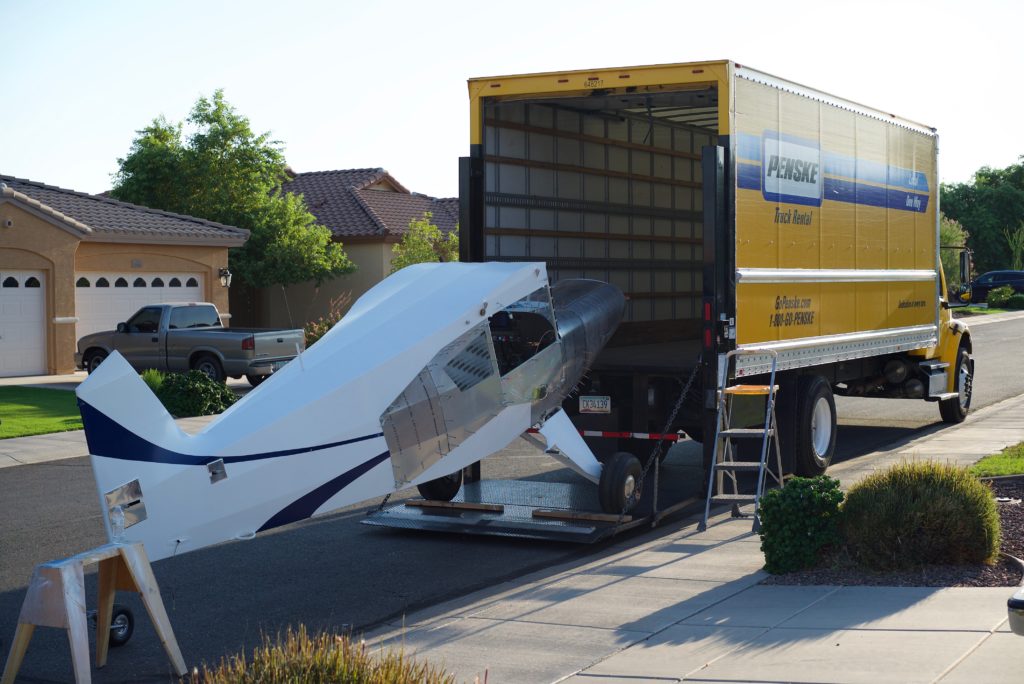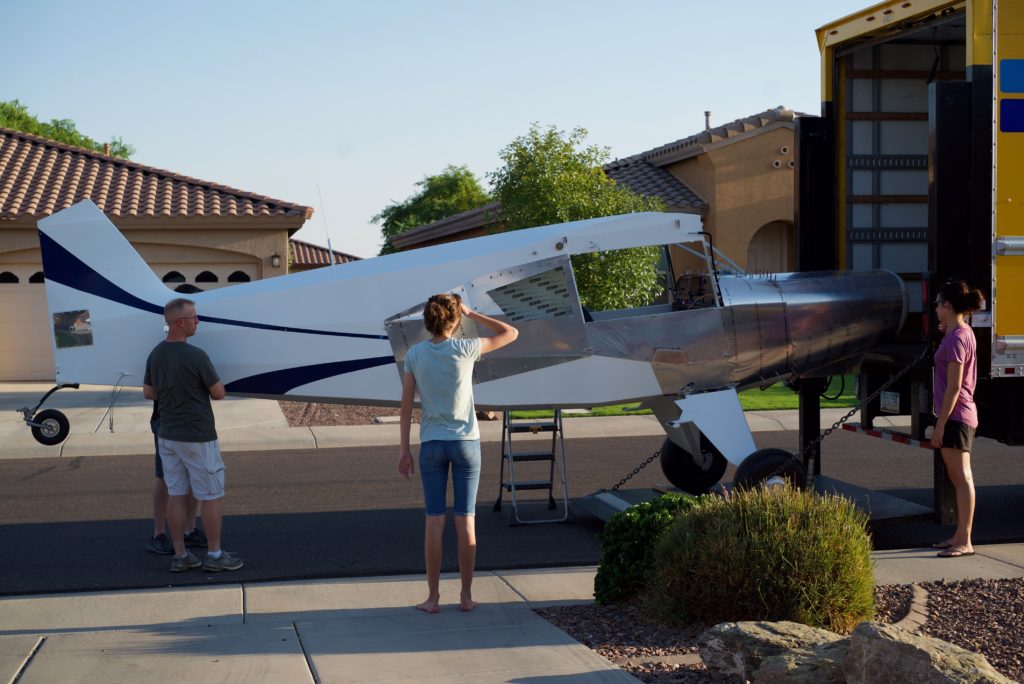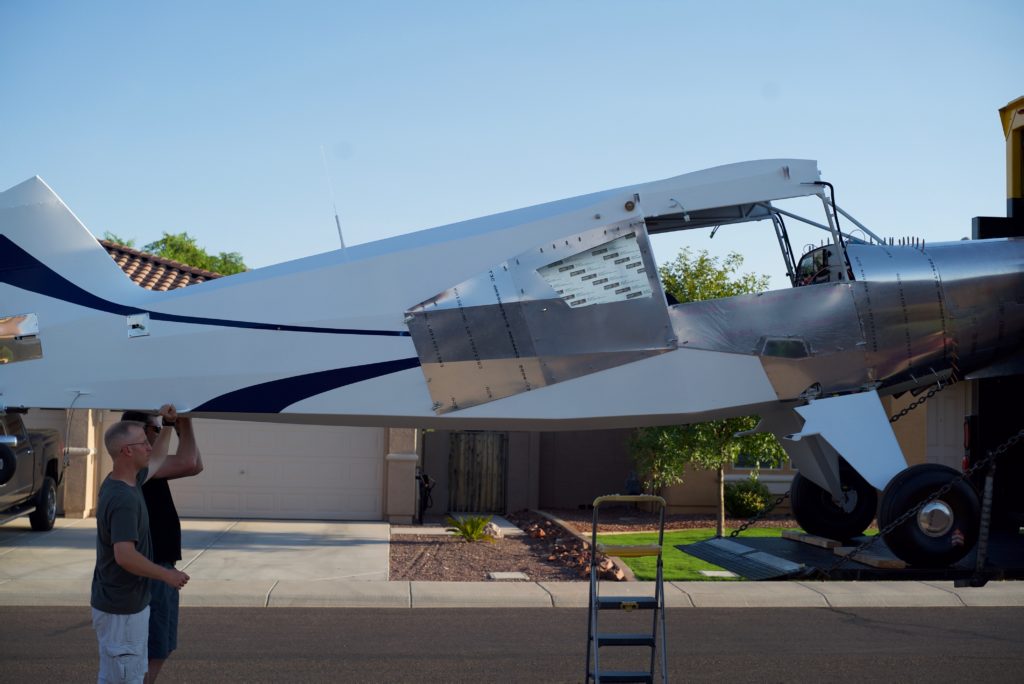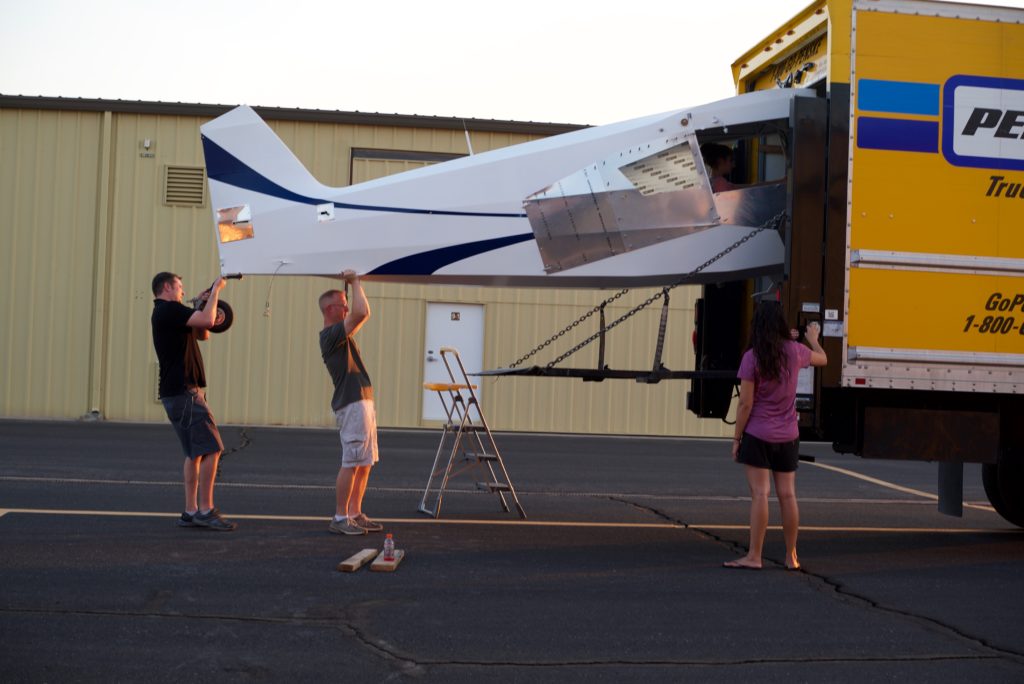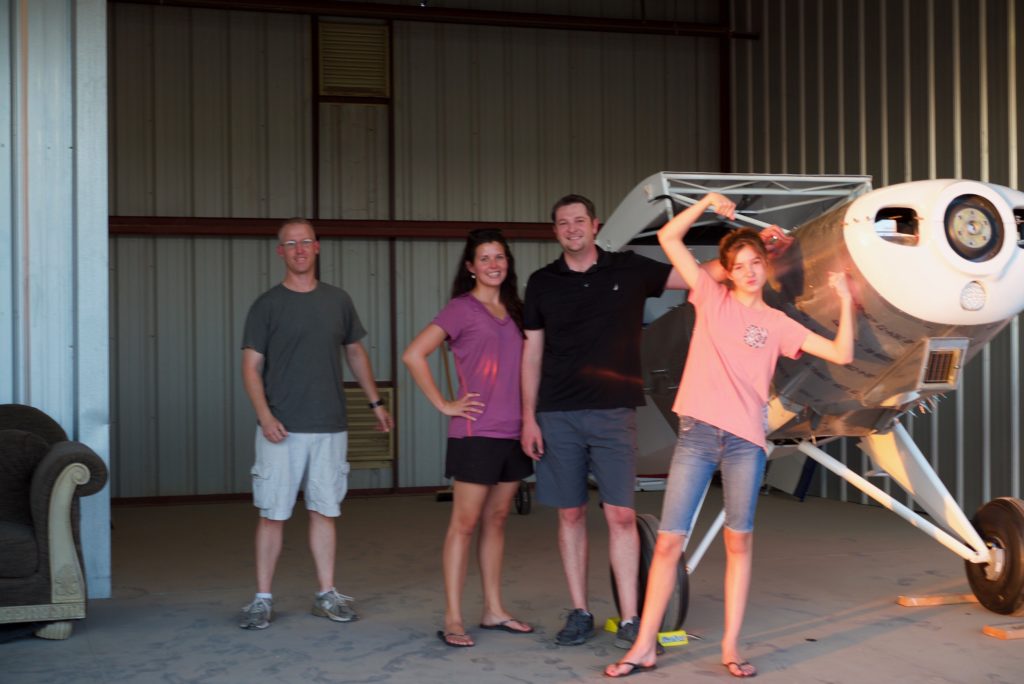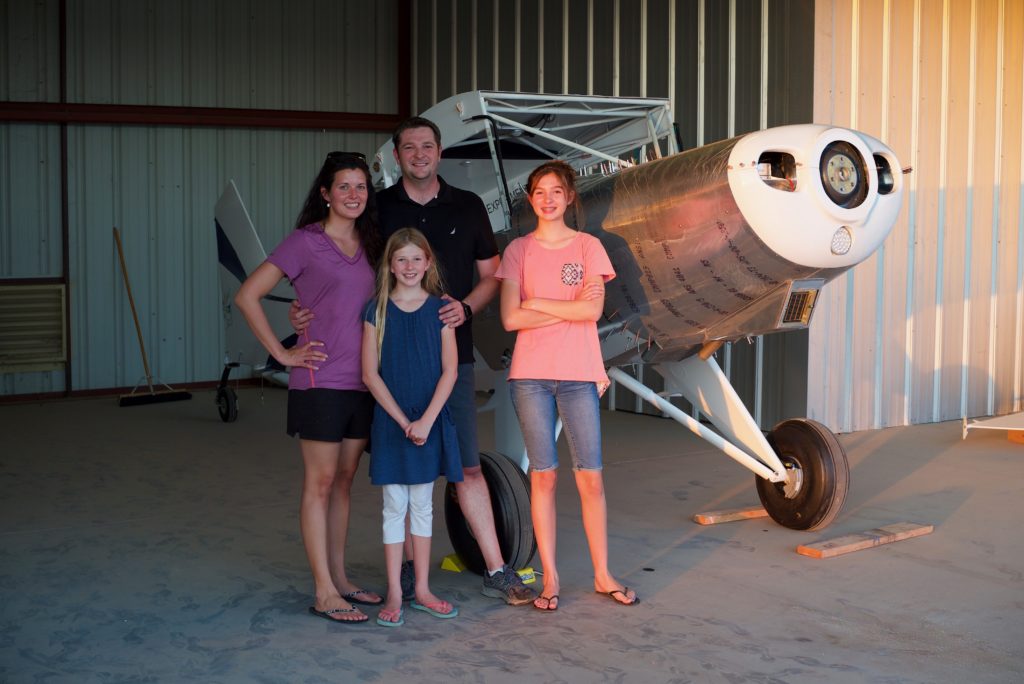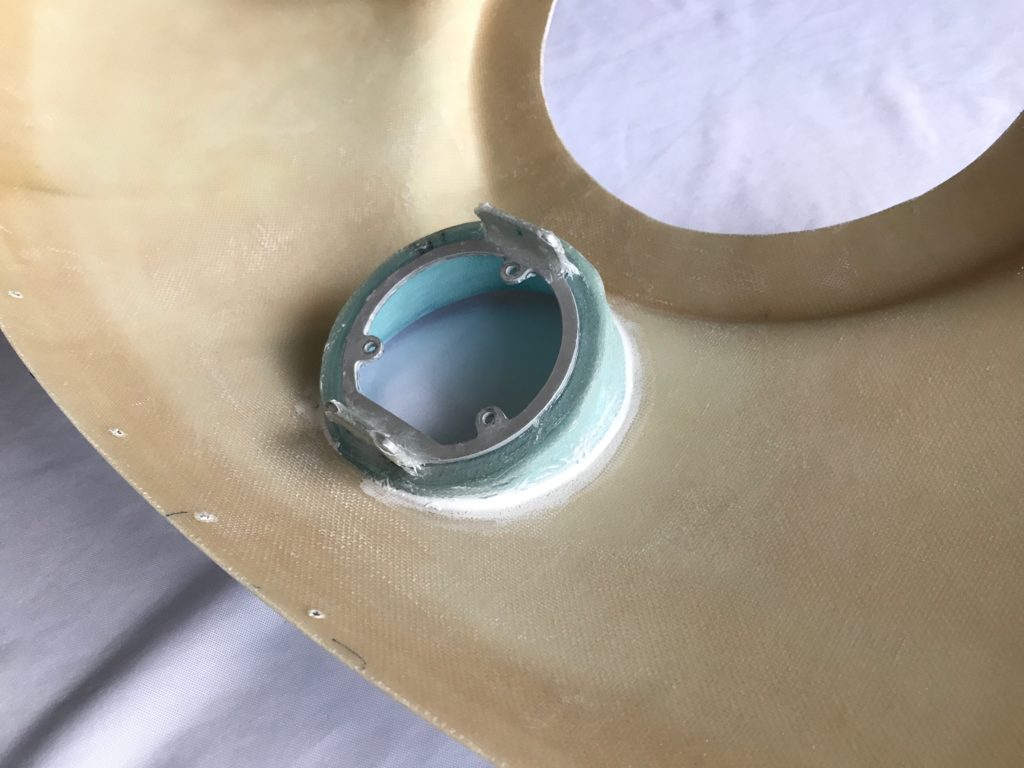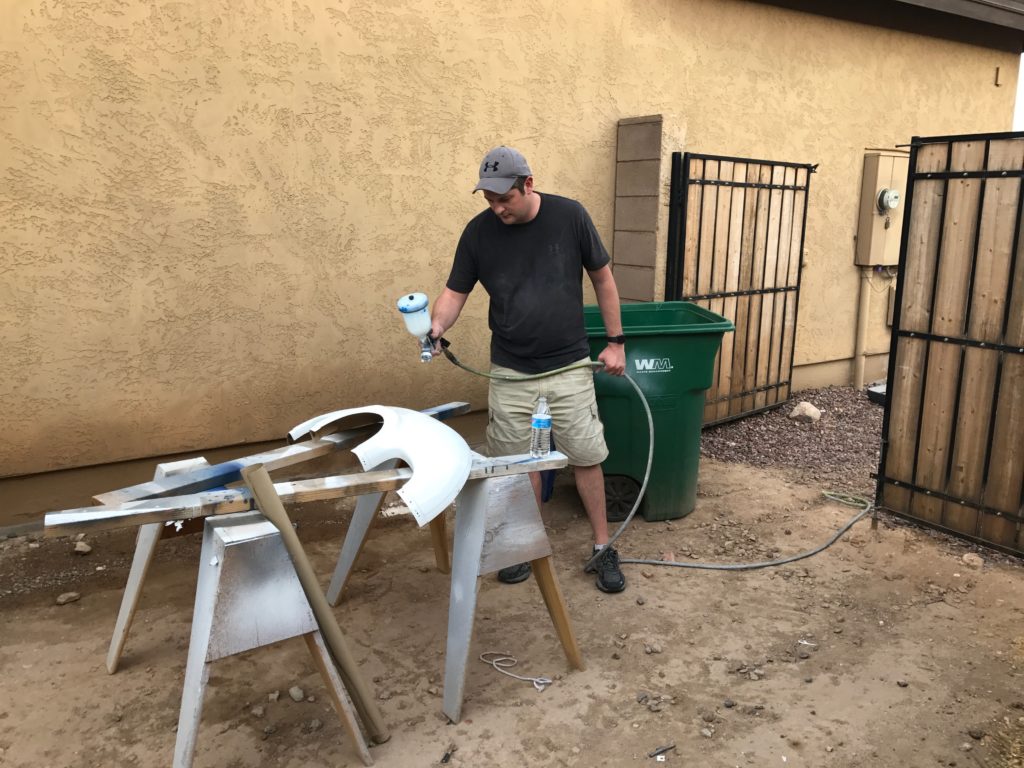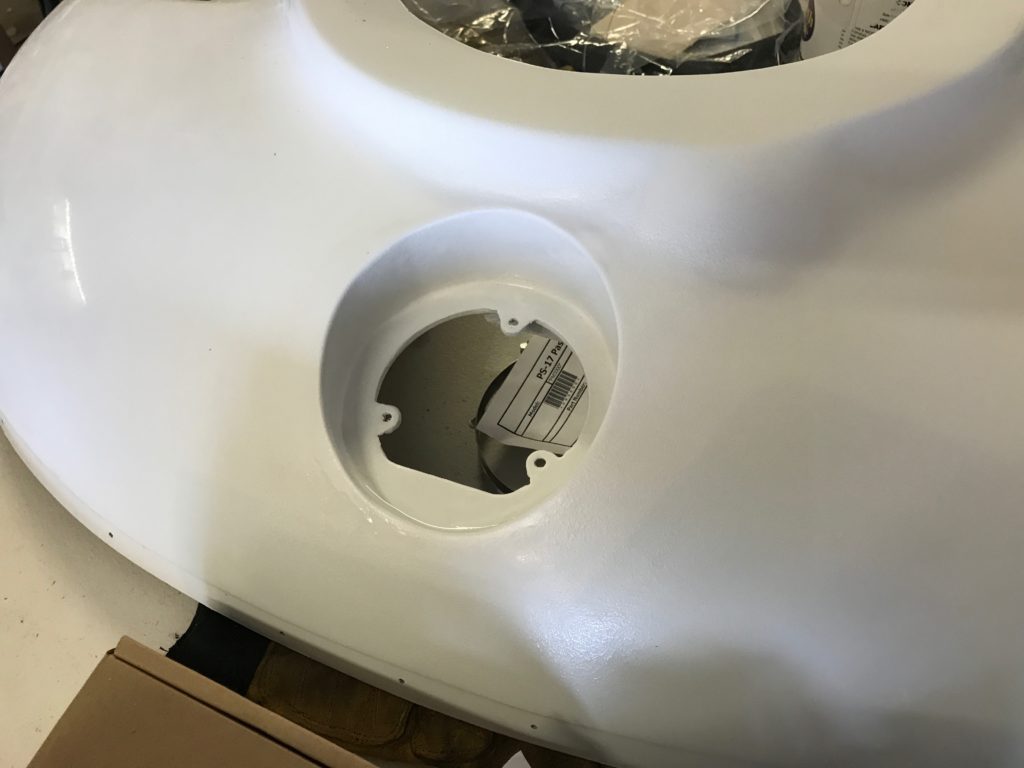Today my wife Cati showed up to help me make the fiberglass windshield fairing. First we used packing tap the make the fairing shape between he boot cowl and the windshield. Then we use mold release wax on the entire surface.
We cut the strips to the proper width and length. Then Cati went to work on wetting the resin then squeezing the excess out on a table. I took the strips and started laying them up on the windshield. 10 layers in all.
After curing for a day, I used masking tap the mark the edges. Then used a band saw to trim it up. Turned out much better than I would have imagined!
Cati is taking a well deserved break eating my lunch. 🙂
